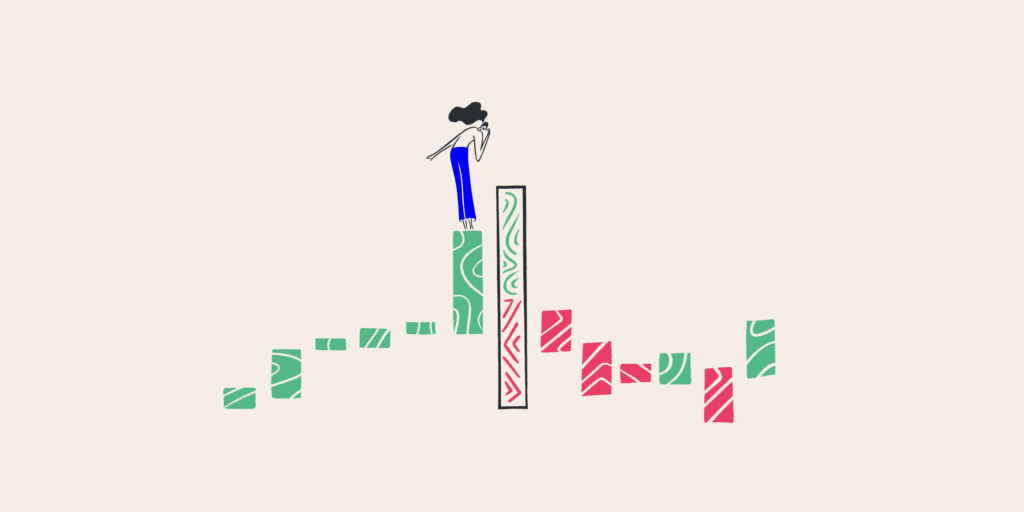Hundreds of stock halts occurred on major U.S. exchanges due to volatility.
These trading halts are mechanisms designed to maintain market stability during extreme price fluctuations. Understanding the causes and implications of such halts may prohibit investors from making a bad deal and safeguard them from insider trading.
In this blog, we will break down what causes stock halts, how they impact you as an investor, and what steps you may want to consider when they occur.
What is a stock halt?
A stock halt, or a trading halt, is a temporary suspension of trading for a particular stock or security. During this period, no trading activity can occur, including buying and selling.
These interruptions are not random—they are carefully regulated to allow the dissemination of material information or to address significant market imbalances. Regulation authorities like the Securities and Exchange Commission (SEC) or stock exchanges such as NASDAQ or NYSE typically implement stock halts.
These halts may last for a few minutes or extend to hours, depending on the reason behind the suspension. They can occur across various securities, including stocks, ETFs, and other tradable assets.
Market-wide circuit breakers are automatic mechanisms designed to temporarily halt trading across major exchanges, such as the Nasdaq and NYSE, during periods of extreme market volatility.
When an exchange like the Nasdaq or NYSE halts trading for a security, it’s usually triggered automatically. There are three levels of market-wide circuit breakers that trigger widespread halts to protect the market from panicked selloffs:
Level 1: 15-minute halt due to a 7% decrease from the S&P 500’s previous close.
- Effect: This short pause may allow participants to digest market conditions and prevent impulsive selloffs.
Level 2: 15-minute halt due to a 13% decrease from the S&P 500’s previous close.
- Effect- This may provide a cooling-off period during several declines.
Level 3: Day-long halt due to a 20% decrease from the S&P 500’s previous close.
- Effect- It may help to prevent further financial damage throughout the day.
Why do stock halts happen?
Stock halts may occur for several reasons. Some of the common causes include:
1. Pending news announcements
When a company is about to release material information—such as earnings reports, mergers, acquisitions, or bankruptcy filings—regulators may halt trading to ensure the information is distributed fairly to all investors.
This pause can allow traders to process the news without causing abrupt price movements driven by unequal access to information.
2. Unusual market activity
A sudden surge or drop in a stock’s price can trigger a halt in trading. This can happen when a stock experiences extreme volatility that exceeds predefined thresholds set by exchanges like NASDAQ and NYSE.
Exchanges monitor for abnormal activity to prevent panic-driven selloffs or speculative bubbles. Stock halting in such cases allows the market to cool off and stabilize. Such halts are often referred to as “volatility halts.”
3. Regulatory concerns
Regulatory bodies such as SEC and FINRA may halt trading if there are concerns about fraudulent activity, market manipulation, or discrepancies in the company’s financial disclosures. These halts can last until the issue is investigated and resolved.
4. Order imbalances
Significant imbalances between buy and sell orders may result in a halt in trading. Such imbalances occur when there is an overwhelming demand to buy or sell a stock without corresponding counter-orders.
Stock halting allows market makers to manage liquidity and restore balance between buyers and sellers, preventing erratic price movements.
Sometimes, stocks are halted due to unforeseen events outside the company’s control, such as natural disasters or technical glitches at the exchange. Such halts may help prevent disruption caused by external events that could destabilize the market.
Types of stock halts
Stock halts can be categorized into different types, depending on the cause:
1. Regulatory halt
These halts are issued by regulatory authorities to ensure fair and orderly trading. For instance, if a company is releasing critical news, regulators may impose a halt in trading until the information is fully disclosed.
2. Volatility halt
Volatility halts, also called “Limit Up-Limit Down (LULD)” halts, are triggered when a stock’s price moves outside a specific range within a short time frame. This mechanism can help prevent erratic price swings.
3. Operational halt
Operational halts may occur due to technical issues within the exchange or trading platforms. This could include system outages, connectivity problems, or other technical malfunctions that disrupt normal trading activities.
In such cases of stock halts, trading is paused to address and resolve the issues, ensuring that all transactions are executed fairly and accurately once trading resumes.
Where to see the latest stock halt updates
You can find current trading halts at Nasdaq Trader or NYSE Trading Halts. You can also look at the stock’s individual page on your broker’s app or website. Even if the broker is not at fault for the trading halt, they will comply with any automatic or instituted halts put in place by the stock’s exchange or SEC.
Are stock halts good or bad?
Stock halts aren’t inherently good or bad—they can occur for various reasons. While they may be triggered by impending or current bad news, they can just as easily happen due to good news. In some cases, stock halts are caused by extreme volatility, such as with meme stocks or short squeezes, where no specific news is to blame.
To determine whether a specific trading halt is positive or negative, it’s essential to understand the reason behind it. Investigate the source of the halt, its cause, and when trading is expected to resume. With this information, you can evaluate the situation logically and decide your next steps.
It’s worth noting: Once a stock is halted, its market value may fluctuate by the time trading resumes. Whether your position gains or loses value during that time is beyond your control. It’s part of the risk and unpredictability of the market.
Bottom line
Understanding stock halts may help you stay informed and make better investment decisions. These temporary pauses in trading are designed to maintain fair and orderly markets, whether due to significant news, price volatility, or regulatory issues. As you continue your investment journey, keeping an eye on the reasons behind stock halts and their resolutions may provide valuable insights into market dynamics.


